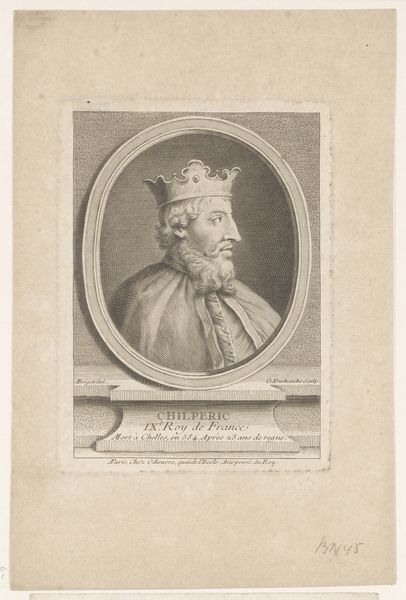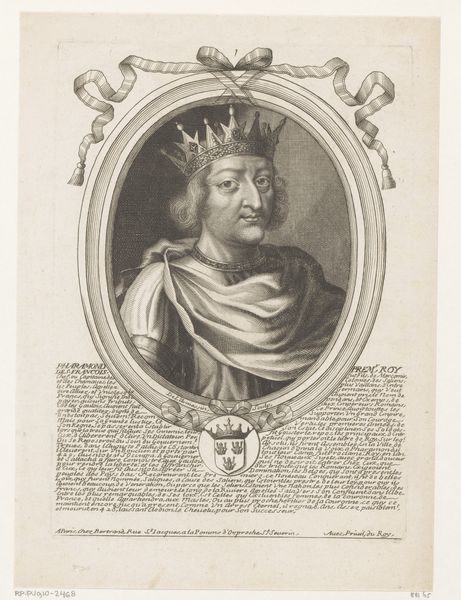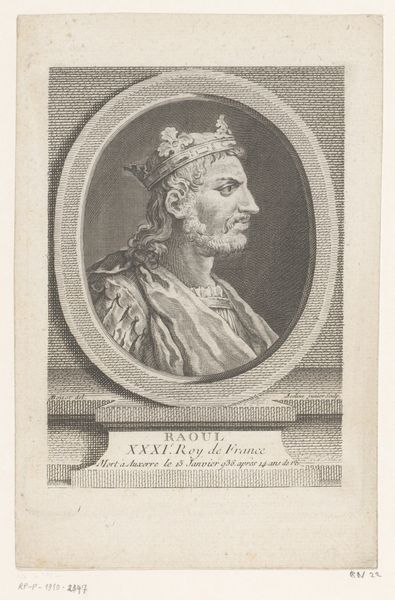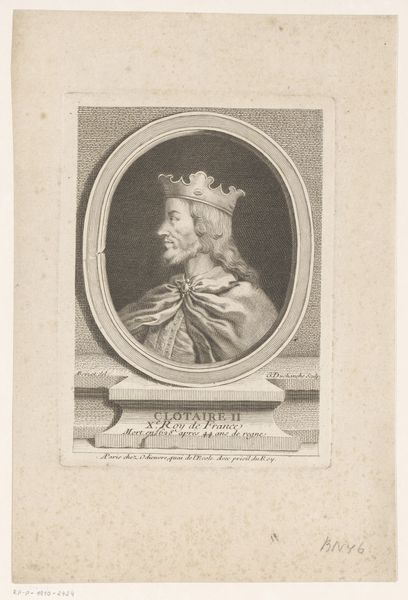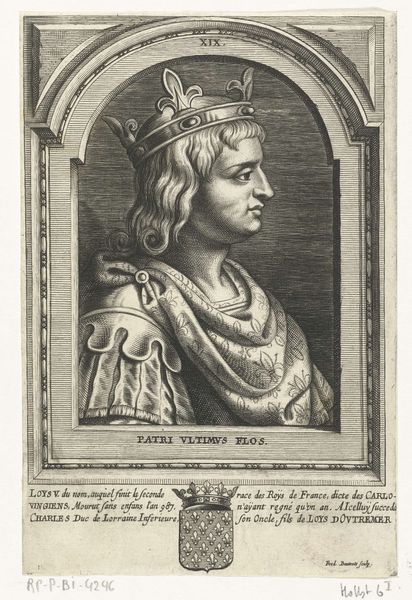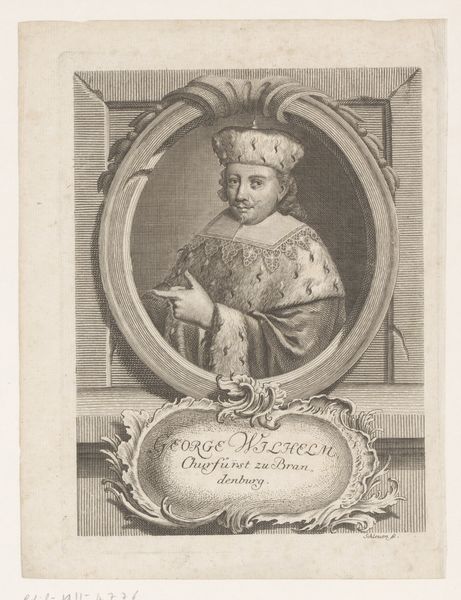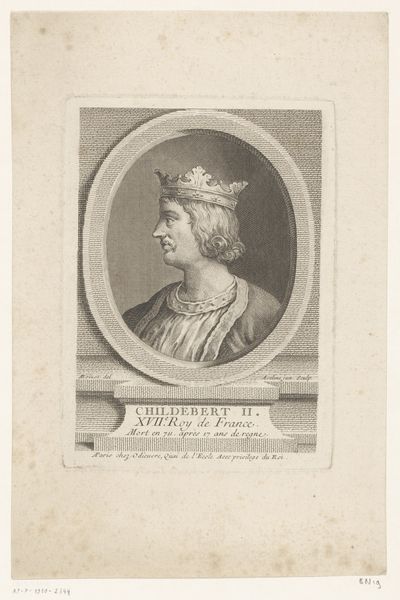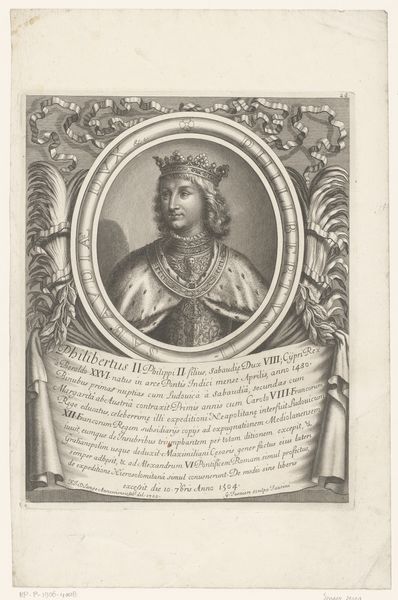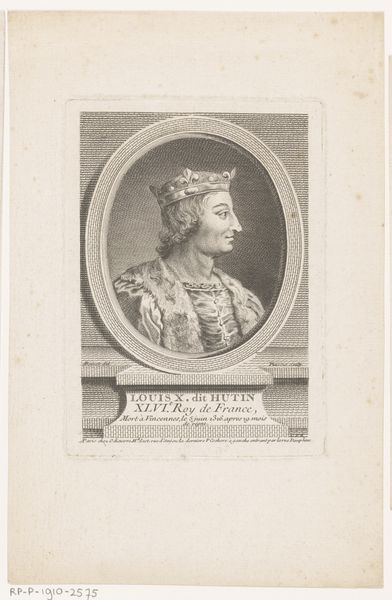
drawing, print, engraving
#
portrait
#
drawing
#
baroque
# print
#
old engraving style
#
figuration
#
line
#
history-painting
#
engraving
Dimensions: height 145 mm, width 107 mm
Copyright: Rijks Museum: Open Domain
Editor: So, here we have a 1740 engraving by Gaspard Duchange, titled "Portret van Clovis II van Frankrijk," held at the Rijksmuseum. The linework is incredible. It feels almost like a photograph, capturing minute details. How would you interpret this piece? Curator: Well, considering the date, it's interesting to examine this engraving not so much as a faithful likeness of Clovis II, who died in 657 AD, but as an 18th-century representation *of* power. Duchange is less concerned with historical accuracy and more invested in visually constructing a specific image of French monarchy, one circulating at a time of political upheaval and nation-building. Editor: So it's less about *him* and more about the idea of kingship itself? Curator: Precisely! The formal presentation – the oval frame, the inscription – contributes to that. Who was this image intended to reach, and what message was it designed to send about French history and legitimacy? These prints would have circulated widely, solidifying a specific visual vocabulary for power. Notice how even in print form, there's a sense of grandeur. Do you think it's effective propaganda? Editor: Definitely effective. I can see how the choice to depict Clovis with these symbols reinforces that idea. It almost makes you forget that he reigned over a thousand years earlier. I hadn't really thought about the print’s political role in its own time. Thanks! Curator: The key takeaway is considering art’s function within its own contemporary context, regardless of when the subject lived. It reshapes how we view art's ongoing dialogue with history.
Comments
No comments
Be the first to comment and join the conversation on the ultimate creative platform.
